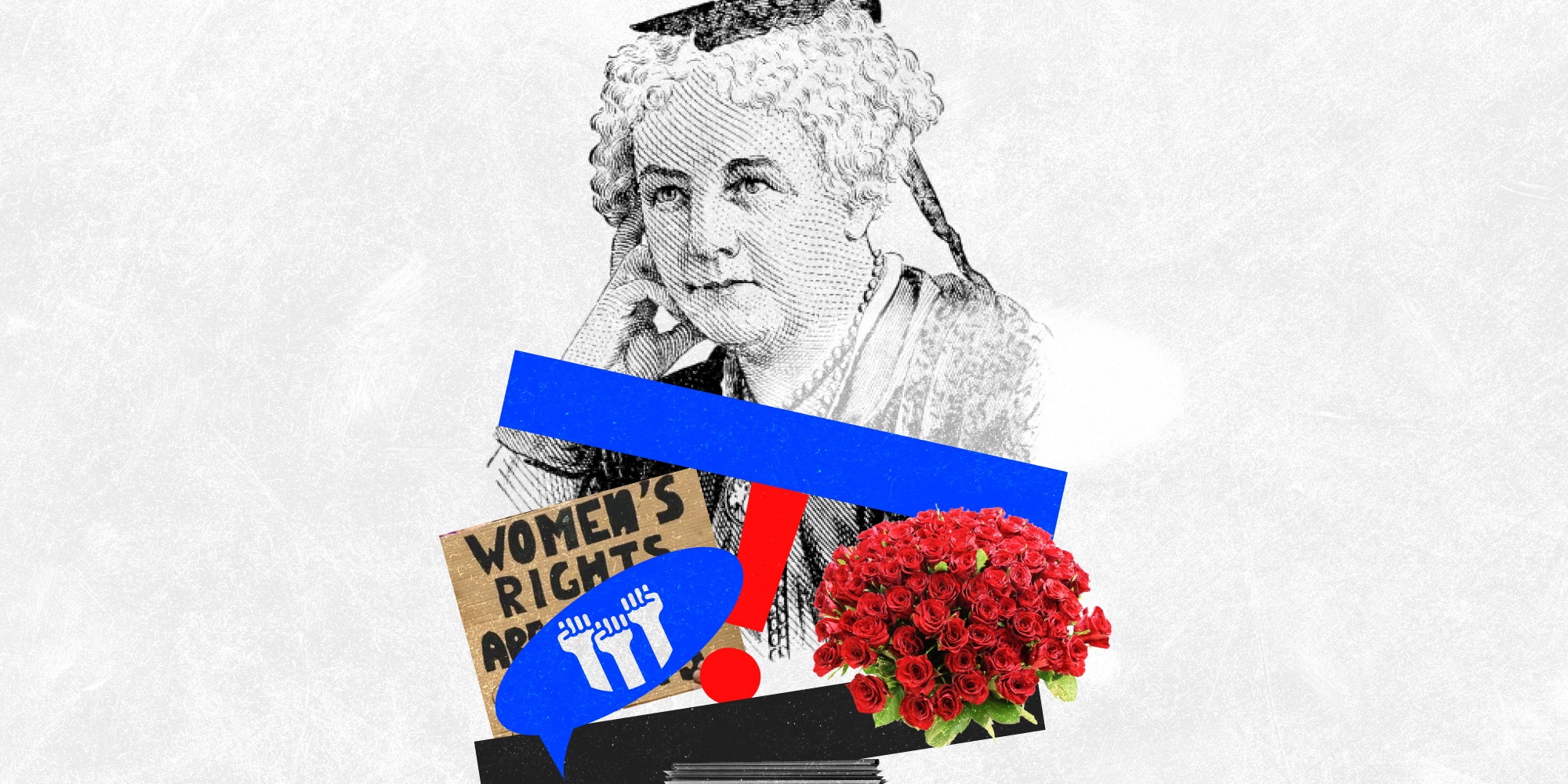Flowers, blood or equality? Centennial history of International Women’s Day

Underdeveloped democracies, legal inequality and violence – women’s movements for change
The USA was the birthplace of the struggle for women’s rights and gender equality. It all started when women were banned from speaking at anti-slavery conventions, this became the impetus for action. In 1848 American activist and abolitionist Elizabeth Cady Stenson drafted a document called the Declaration of Beliefs and presented it at the first women’s rights conference in Seneca Falls, New York. The Declaration primarily dealt with the right to vote, as well as the right to property, work, and divorce. American women were the first to move towards legal independence, but the struggle for equality was just beginning, since none of the declared rights were protected by the government. 60 years after the signing of the document, in 1908, about 15,000 women marched through New York, demanding fair wages, shorter working hours and, of course, the right to vote. A year later, the Socialist Party of America proclaimed the first National Women’s Day.
In Europe however, the issue of gender equality arose somewhat later than in the other part of the world. In 1910, the second International Conference of Working Women was held in Copenhagen. Klara Zetkin, a representative of the Social Democratic Party of Germany, was inspired by the American history of the struggle for women’s rights and put forward the idea of recognizing International Women’s Day. She proposed that such an event be celebrated every year in every country as a sign of public recognition of the contribution of gender to the development of the nation.
The beginning of the 20th century became fundamental for the new world that was being created at that time: it was during this period that the role of women in society began to be rethought as an independent and emancipated figure, not the shadow and support of a man.
International Women’s Politics, Political Rights, and World Wars — A Constant Movement
At the beginning of the 20th century, European countries and some American states introduced census suffrage rights — meaning only women from certain social classes could exercise this right. However, the mass demand for women’s undeniable right to participate in elections, regardless of their background and education, emerged after the First World War. During the interwar period, humanity particularly pondered equality and stood against gender discrimination because during the Great War, women worked alongside men in factories, served in the military, or saved lives in hospitals. Thanks to this, the opportunity for both genders to work equally in science, politics, or the cultural sphere was achieved.
For example, Marie Curie was the first woman who become a Nobel laureate in two fields at once, co-discovering radium and polonium (the latter named in honor of her native Poland). In addition to her significant discoveries in physics and chemistry, Marie paved the way for other women in science, becoming the first female professor at the University of Paris and later assisting scientists, including those from the University of Lviv.
The first fashion couturier, Coco Chanel, started an entire era in the world of fashion and history. To this day, the little black dress and the perfume “Chanel No. 5” are considered eternal classics.
In the political arena, discriminatory attitudes also diminished, but much later, after the Second World War. One of the most famous female politicians of the 20th century was Indira Gandhi, who held the position of Prime Minister and later Minister of Foreign Affairs of India. During her career, she pursued a moderate politics based on the idea of non-alignment of the country in military blocs, supporting peace, and continuing international cooperation with all parties.
The first female president became former First Lady Isabel Peron in 1974. Her husband, Juan Peron, passed away, and thanks to the significant support from the parties and the people, she led the country.
Wars always change the world, and the global conflicts of the 20th century were no exception. For the first time in history, women have showed that they are capable to work on an equal footing with men and can compete with them.
Two Victories: over totalitarianism and over inequality
1945 will go down in history as a Victory Year. Won the war over Hitler’s coalition and with new strength continued the war against inequality. In the same year, the Charter of the United Nations was signed, the preamble of which has exact new orders and views “….to reaffirm faith in fundamental human rights, in the dignity and worth of the human person, in the equal rights of men and women and of nations large and small,….”. Later, in 1948 was adopted the Universal Declaration of Human Rights, which has a detail description of the basic conditions for solving problems with discrimination in society. 50 countries voted in favor of the Declaration, and 8 countries abstained, including Ukrainian SSR.
Despite the first international documents, which were supposed to change the world for better officially, all provisions remained only as articles on the paper, and women continue to suffer from gender inequality. The ineffectiveness of those innovations caused the second wave of feminist movement. This happened from the 1960s to 1970s – women strove to draw the world’s attention to the problems of domestic violence and marital rape. Such protests began to be actively supported by left-wing parties and trade unions, and soon enough the UN heard the voices of women.
In 1975, the World Conference of the International Women’s Year was held in Mexico City, Mexico. In the same year, UN declared the decision to establish the international Women’s Day. This was the beginning of a new global era of inequality eradication, and as a result, 133 UN member states adopted the World Plan of Action to implement the goals of the International Women’s Year. The Document was about: health care, position in the family, financial assistance, new policy regarding the role of women in society, about Palestinian and Israeli women, aid to the Vietnamese people, the situation of women in Chile, etc. The Declaration contained many provisions and directions regarding specific actions from 1975 to 1985. It can be considered the first concrete document that made positive changes in the social and political life of mankind.
The Eight of March today. What does the history of women’s fight teach us?
In historical retrospect, for centuries there was a struggle for the rights of women in the world, for an opportunity to have a job, to be financially independent and independently protect their own dignity. Today, March 8 in Europe is a holiday about women’s rights and equality, about actions against violence, about long and thorny path to respect. In most countries it is unofficial, but some people still celebrate it, such as in Poland, France, Germany, Greece and Italy. China and some countries of Africa and East Europe left this holiday as official.
The country in which feminist movements began in the first place – the USA – also refused to celebrate the holiday, but introduced a new, no less worthy tradition. During March, all of the institutions explore feminist themes and focus on women’s achievements, remembering how all was happening a century ago and what can still be done so that none of the genders feel discriminated against.
March 8 should be interpreted by everyone personally: whatever it is a story about flowers and gratitude or about the right to be heard.
The author of the text: Kateryna Shtepa, student of the Faculty of History of Taras Shevchenko KNU, volunteer of the Center for Civil Liberties.
The translation from Ukrainian was made by volunteers of the Center for Civil Liberties: Bohdan Horobets, student of NaUKMA / Victoria Tatarchuk, office manager of Atrocity Crimes Advisory Group / Maryna Samoilenko, Business Development Manager at the Korean pharmaceutical company Wooshin Labottach Co.ltd, Korea / Liza Vengrynovych.

